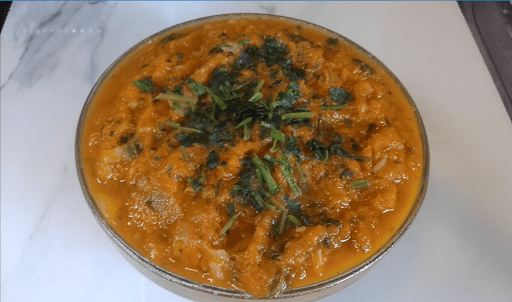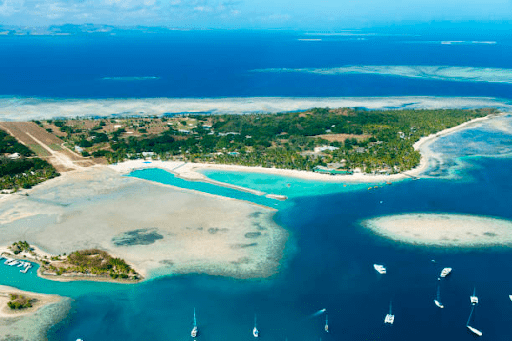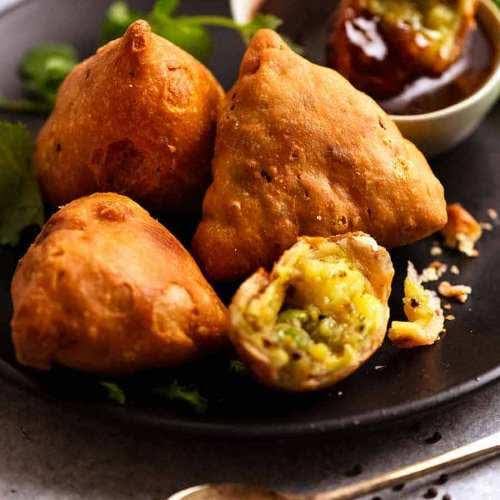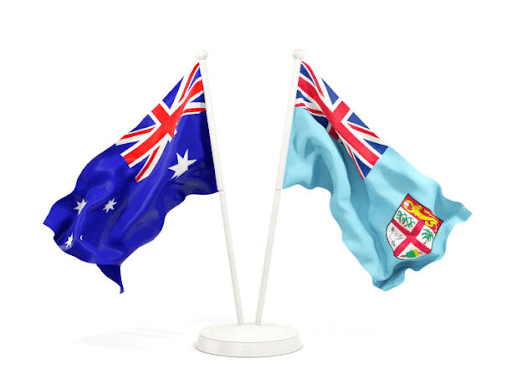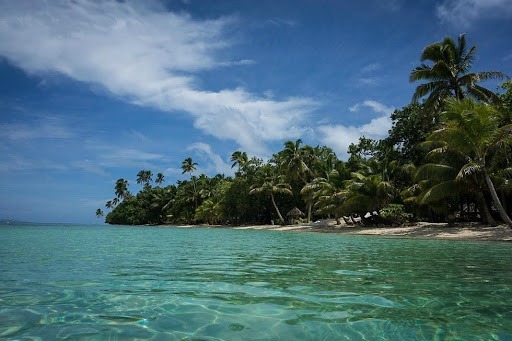The evolution of Fiji’s national flag
In 2015, Fiji nearly got a new national flag.
A national flag is an emblem of a nation’s identity, history, values, and collective memories. Fiji is no different.
Indeed, their national flag has undergone some evolution over time.
Today, let’s take a look at Fiji’s national flag — from aeons ago, recent past, and present.
In 1865, Bau, Rewa, Cakaudrove, Macuata, Naduri, and Lakeba banded together to form the United Tribes of Fiji. They adopted a flag that had a blue field and a large white five-pointed star in the centre.
The chief of Lakeba became the president in 1867. Following that, the flag was changed to one with a blue field with half a sun. 30 sun rays shot out from the base of the flag; a crown with a cross occupied the top left corner.
The Kingdom of Lau was established in 1869. A new flag was introduced. It was bicolour, with a red stripe at the bottom and white on top. A red cross was found at the top left-hand corner.
In 1817 and prior to becoming a British colony in 1874, Fiji used a flag derived from the flags of Christian missionaries who landed in the area. The flag was divided vertically, with white on the left and blue on the right. A red shield with a white dove was placed in the middle where the colours met, underneath a crown.
Later, when the country came under British rule, the colonial powers introduced the Union Jack for government buildings, the British Red Ensign for private vessels, and the British Blue Ensign for government vessels.
To distinguish its flag from similar flags used in the other British colonies, the local badge was situated at the centre of the fly end of the Blue Ensign. The local badge was based on the 1908 coat of arms (more on this later).
In 1924, the white disc was removed. The field was changed to sky blue, and the tribe members, banner, boat, and coat of arms were removed.
When Fiji was about to achieve independence, they held a competition to develop a national flag. Since they had close links with other Pacific countries like Australia and New Zealand and were familiar with the old design, they decided on a modified version of the colonial flag.
Upon independence on 10 October 1970, the light blue ground was replaced with a darker blue. They also removed the crest, motto, and supporters in the coat of arms, so that the shield would appear larger and more visible.
The flag remained the face of the country for many years.
On 3 February 2015, the Fijian Prime Minister announced that to commemorate the 45th anniversary of the country’s independence, the country would put together a national panel to create a new national flag.
The Prime Minister chose busy Nasinu, the urban area on the island of Viti Levu, to make the announcement. He mentioned his 2013 New Year speech when he suggested a new national flag. He expressed that the current symbols were “out of date” and “no longer relevant”. The decision to remove the Union Jack was not an easy one, but it was high time for a change.
He went on to say that the time had come for Fiji to create a new flag that would reflect its position in the world as a “modern and truly independent nation-state”. 2000 designs were submitted and 23 were shortlisted.
However, in a turn of events, the Prime Minister announced on 17 August 2016 that the plan for a new flag had been scrapped. He said in a statement, “While I remain convinced personally that we need to replace some of the flag’s colonial symbols with a genuinely indigenous expression of our present and our future, it has been apparent to the government since February that the flag should not be changed for the foreseeable future.” Since Fiji won their first ever Olympic gold medal in the 2016 Summer Olympics, its flag has gained popularity.
The decision to retain the flag was final.
Other relevant Fijian emblems
The Coat of Arms of Fiji
The Coat of Arms of Fiji was introduced in 1908. It includes a shield with a St George’s Cross that cuts the shield into quarters. A red horizontal band spots a golden lion. The top left quarter has three sugar canes. The top right features a cocoa-nut palm tree. The lower left has a dove with an olive branch, and the lower right portion has a bunch of bananas.
A boat is on top of the shield. Below the two tribesmen protecting the shield is a banner that reads, “FEAR GOD AND HONOUR THE QUEEN”.
The Standard of the President of Fiji
The Standard of the President of Fiji has a blue field. The Coat of Arms is in gold. The golden knot underneath the Coat of Arms is gold too.
The Merchant Ensign of Fiji
The Merchant Ensign of Fiji is similar to the British red Ensign with a plain red field. The British Union Flag is at the top left and a shield of the Coat of Arms is to the right.
The Flag of the Fiji Navy
The Fiji Navy’s flag is a white ensign with the British Union Flag at the top left. The Coats of Arms is to the right too.
The Flag of the Fiji Civil Air
The Flag of the Fiji Civil Air has a sky blue field with a white-bordered dark blue cross. The British Union Flag is to the left and the Coat of Arms is to the right.


